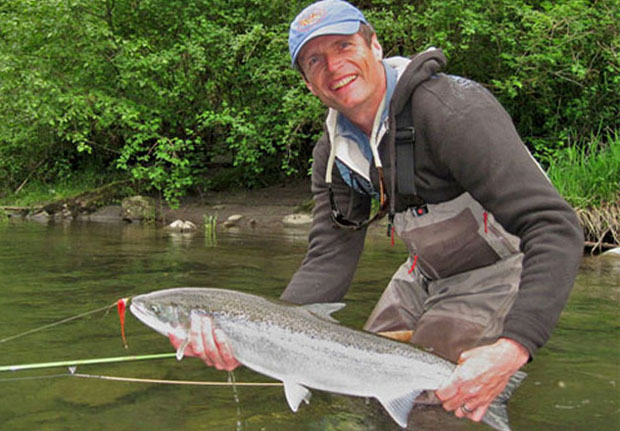[dropcap]I[/dropcap]t is not unusual to query an angler with decades of experience, not a professional but a vocational angler, and ask if he or she uses shooting heads, shooting lines, skagit, scandi or tips and get of reply of a blank stare … unless from Europe, U. S. west, Alaska or Great Lakes region.
Most will have fished for multiple species on multiple continents with just a floating line or an intermediate sinking line. I certainly did. That is until a dozen or so years ago when I started fishing the surf in Southeast Florida with a switch rod, tube flies and RIO’s Outbound Short Head. From day one my hook up stats improved markedly. I started to realize that fly lines and fly rods are similar to golf clubs – you can’t be successful playing 18 holes with just a 5-iron.
 It is really not a difficult transition
It is really not a difficult transition
Transitioning from floating to using various types of fly lines is one that will be much more productive in both fresh water and saltwater environments.
What are these lines all about? Listen to Simon Gawesworth and you will be dymystifed in five minutes. The first video is about Spey fly fishing but Simon covers switch rods and fly lines with shooting heads for regular 9-foot overhand rods. The second video is about choosing a trout fly line. At the end he discusses a spey-like line called Outbound short, which I use often (more distance, windy, big flies). The third video is all about about shooting line
Watch the three of them and you will never again be confused about fly lines: scandi, skagit, tips, shooting heads, shooting lines. various tapers and where, when and how to advantage yourself in any given fishing situation.
[information]
[/information]
[youtube id=”7fjdfiNjj0E” width=”620″ height=”360″]
[youtube id=”2pGfuFbBSbk” width=”620″ height=”360″]
[youtube id=”vxxn-r4FfPM” width=”620″ height=”360″]


